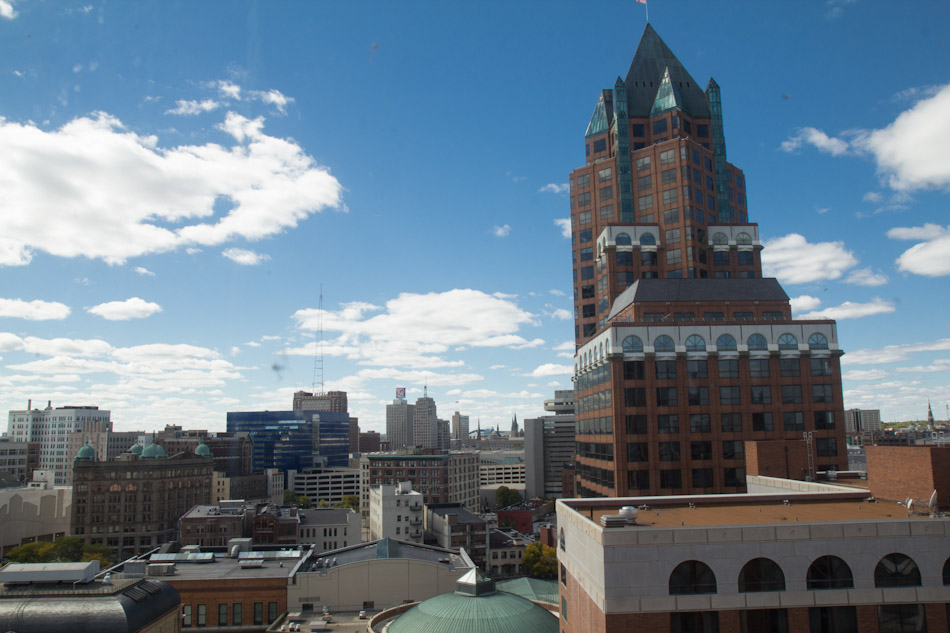Milwaukee 6th Most Diverse City in US?
More diverse than nearly 600 other cities, says new report. Should we believe it?
A new ranking of cities in America finds Milwaukee is near the top in diversity, ranking as the sixth most diverse large city, and the 15th most diverse of 607 cities in America ranked in the report. It also beat out every other city in Wisconsin for diversity.
How is that possible given the repeated designation of Milwaukee as one of the most segregated cities in America? A study from Brown University, based on 2010 census data, ranked the Milwaukee metro area as the second worst in the nation for Black-white segregation and a 2018 study by the Brookings Institution found the metro area ranked number one, the very worst for Black-white segregation.
So who’s right? That depends.
The Brown and Brookings studies are based on methodology developed by sociologists in the 1950s, using the dissimilarity index, which measured how well distributed Black residents were in a city or metro area. Thus, for the Milwaukee metro area, which is 17 percent African American, any census track with less or more than a 17 percent Black population, falls short of the ideal.
And to prevent this “invasion” from happening, you needed to disperse Black residents as widely as possible, in essence making them as invisible as possible, so “there’s no ability… to take over an area, as Tauber put it. Thus, when the 2000 Census ranked Wisconsin cities using the dissimilarity index, Brookfield was ranked as the least segregated because its Black population (just 1 percent of the population) was the best distributed.
Milwaukee, by contrast, was ranked as most segregated of cities in Wisconsin, though it had the most black residents (38.6 percent of the population). The two cities other cities with the most Black residents, Racine (21.6 percent Black) and Beloit (16.8 percent Black), ranked near the bottom as well, far below the ideal condition of Brookfield.
And nationally in 2000, Salt Lake City ranked 95th, as the fifth least segregated of the 100 biggest metro areas in the nation, though its population was just 2.26 percent Black.
The new report that ranks Milwaukee as 6th most diverse would probably be laughed out of the room by American sociologists, who continue to use the dissimilarity index 65 years after it was created. This new report was created by AdvisorSmith, “Your trusted business insurance resource,” as its website declares.
And yet the approach uses a common sense description of diversity that I suspect most Americans, white or minority, might find more compelling. The highest ranked cities have the most integration of all races and ethnicities, including white, African American, Hispanic or Latino, Native American or Alaska Native, Asian, Native Hawaiian or Pacific Islander.
By that standard, Milwaukee’s diversity score was higher than nearly anywhere in the nation, with a population as measured by Census Bureau statistics that is 43 percent white, 38 percent Black, 20 percent Hispanic or Latino, 4 percent Asian and 0.5% Native American. (That’s more than 100 percent since some identify in multiple categories.)
Ranked number one in the report was Oakland, CA, where the city’s population is 35 percent white, 23 percent Black, 27 percent Hispanic or Latino, 15 percent Asian and 0,9 percent Native American. That sounds like quite a melting pot; could a city be more diversified?
And yet in the 2018 Brookings study, Oakland was lumped together in the San Francisco metro area as 24th most segregated, worse than 76 other metro areas.
A recent study by Marquette University research fellow John D. Johnson offers an antidote of sorts. As Urban Milwaukee has reported, the study ranks only city neighborhoods by how integrated they are, and ranks the Little Menomonee neighborhood (35 percent Black, 15 percent Hispanic or Latino, 7 percent Asian) and Miller Valley (36 percent Black, 16 percent Hispanic or Latino and 11 percent Asian) as the most integrated. Yet these very diverse neighborhoods would be ranked as highly segregated by the traditional metro area ranking by sociologists, which demands each census track to be 17 percent Black.
The ranking by sociologists has always been about Black integration with whites or the entire population, even as America continues to become more Hispanic and Asian as a percent of the total population. The Brown 2010 study did find that Milwaukee ranked 13th for Latino-white segregation and 116th, better than 115 cities, for Asian-white segregation, but that rarely gets much press attention; the headlines are all for how well metro areas disperse the black population.
And the tag of “most segregated” then gets reduced in the popular imagination to mean most racially biased. But there is reason to doubt that. A study of anti-Black tweets found Milwaukee was near the average in the United States, with cities like Baltimore, Atlanta and New Orleans at the top, in that order. (Madison ranked as the 10th worst.)
In that same story was another study, of the use of the N-word in Google searches, which found Wisconsin ranked near the average and that included southeast Wisconsin. “The most concentrated cluster of racist searches happened not in the South, but rather along the spine of the Appalachians running from Georgia all the way up to New York and southern Vermont,” the Washington Post reported. “Other hotbeds of racist searches appear in areas of the Gulf Coast, Michigan’s Upper Peninsula, and a large portion of Ohio.”
What does all this prove?
I don’t doubt there is racism and segregation in both the city and metro area of Milwaukee, and giving it a 6th place ranking for diversity seems simplistic at best. But is it any more simplistic than reducing the reputation of Milwaukee, Oakland or any otters large metro area based on one number ranking the amount of Black dispersal? At least the ranking for a diversity has a compelling goal: integration of all races and ethnicities. The goal of the dissimilarity index is one that polls have shown most African Americans don’t share, to be as dispersed as possible in a metro area. Moreover, it is based on a fear of a tipping point as neighborhoods become more Black, which research has disproven. It’s time for sociologists to retire this outmoded measurement.
If you think stories like this are important, become a member of Urban Milwaukee and help support real, independent journalism. Plus you get some cool added benefits.
Murphy's Law
-
Top Health Care Exec Paid $25.7 Million
 Dec 16th, 2025 by Bruce Murphy
Dec 16th, 2025 by Bruce Murphy
-
Milwaukee Mayor’s Power in Decline?
 Dec 10th, 2025 by Bruce Murphy
Dec 10th, 2025 by Bruce Murphy
-
Total Cost of Foxconn Is Rising
 Dec 8th, 2025 by Bruce Murphy
Dec 8th, 2025 by Bruce Murphy






















One of my favorite little books is: HOW TO LIE WITH STATISTICS. Your article is a perfect example of how folks can use misplaced statistics to say different things. It is no doubt that the City of Milwaukee is a very diverse city with rings of suburbs less diverse and the WOW communities downright, Wow, White on White folks. But it must also be noted that municipal boundaries are often meaningless, lines drawn on maps that don’t match reality of place. It is better to note that the south shore of Lake Michigan is a corridor. The lake is a real line, one that matches the reality of living on dry land. But this shoreline is also a corridor, one with a highly mobile population. This corridor stretches from Gary IN to Port Washington in Wisconsin. And contrary to popular conception, it is often the poor that are most mobile–whether eviction, moving in with relatives and friends or downright homelessness, it is this population that is most likely to move along this corridor.
The more important measure of a city’s racial health is the degree of concentrated poverty. On this measure, Milwaukee has no reason to pat ourselves on our backs. The Economic Innovation Group publishes an index of distressed communities, including percentage of a city’s population who live in a “distressed” zip code. In their 2018 rankings Milwaukee is the 7th most distressed city with more than half of its residents living in such areas — Detroit has almost 99% of its residents living in distressed zip codes. And William Julius Wilson showed decades ago that while most Americans who are poor are white, only African Americans live in areas of concentrated poverty. Milwaukee is at the bottom of the ladder of racial justice, not the middle and far from the top.